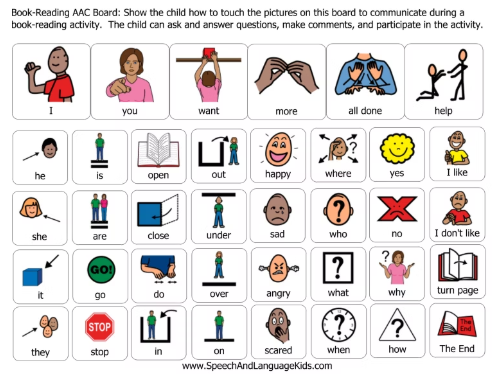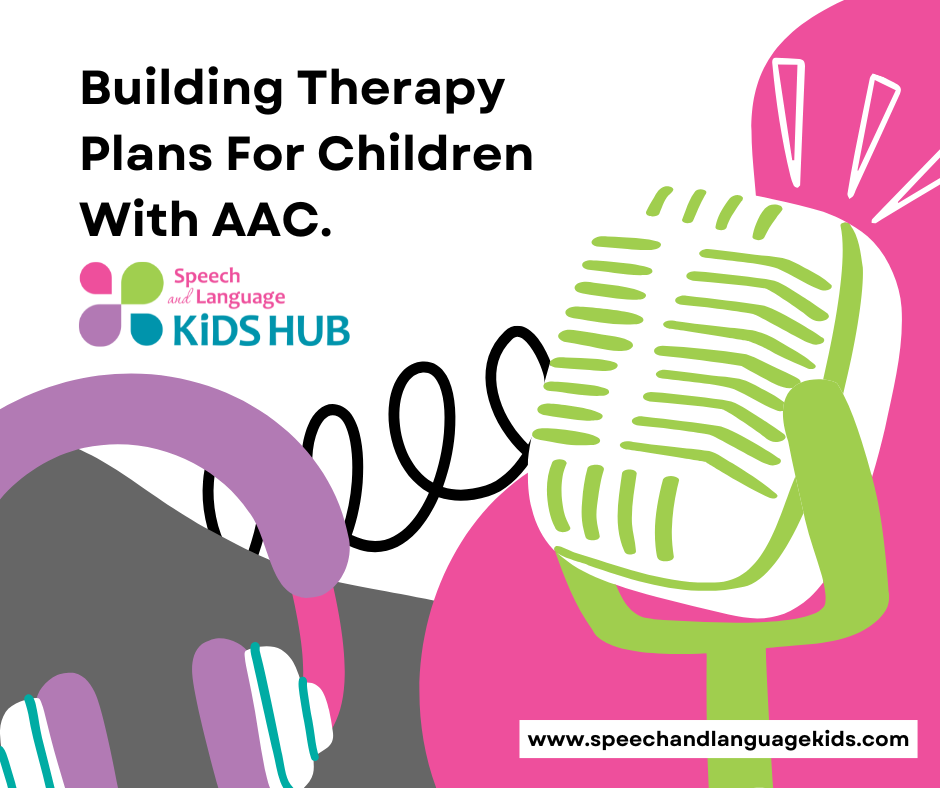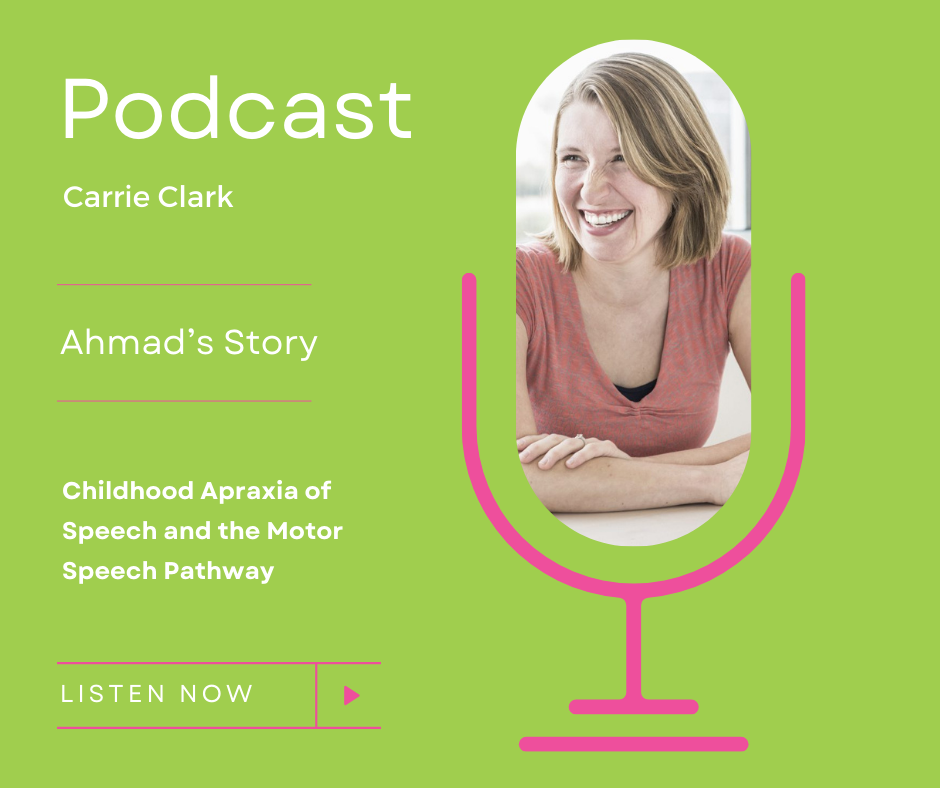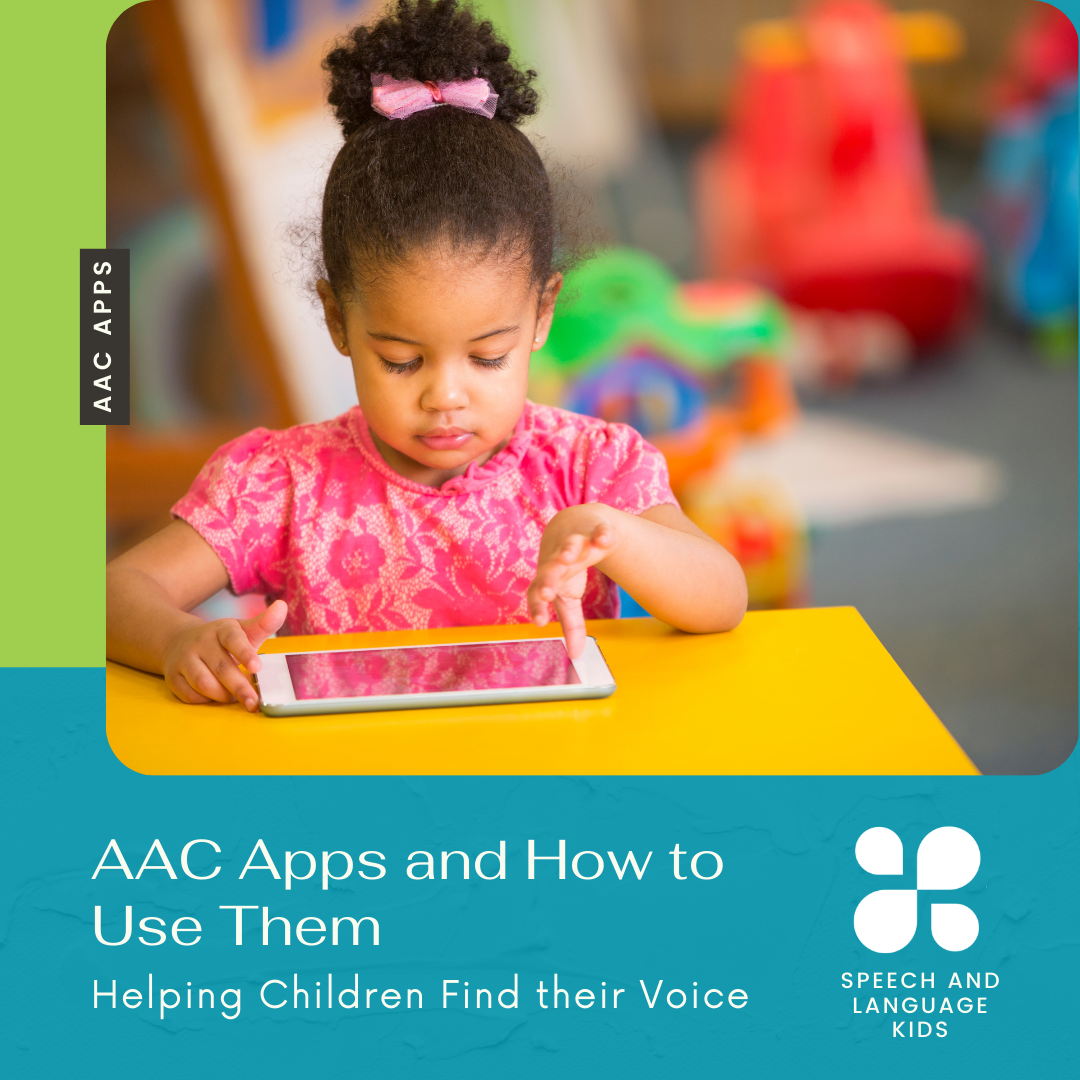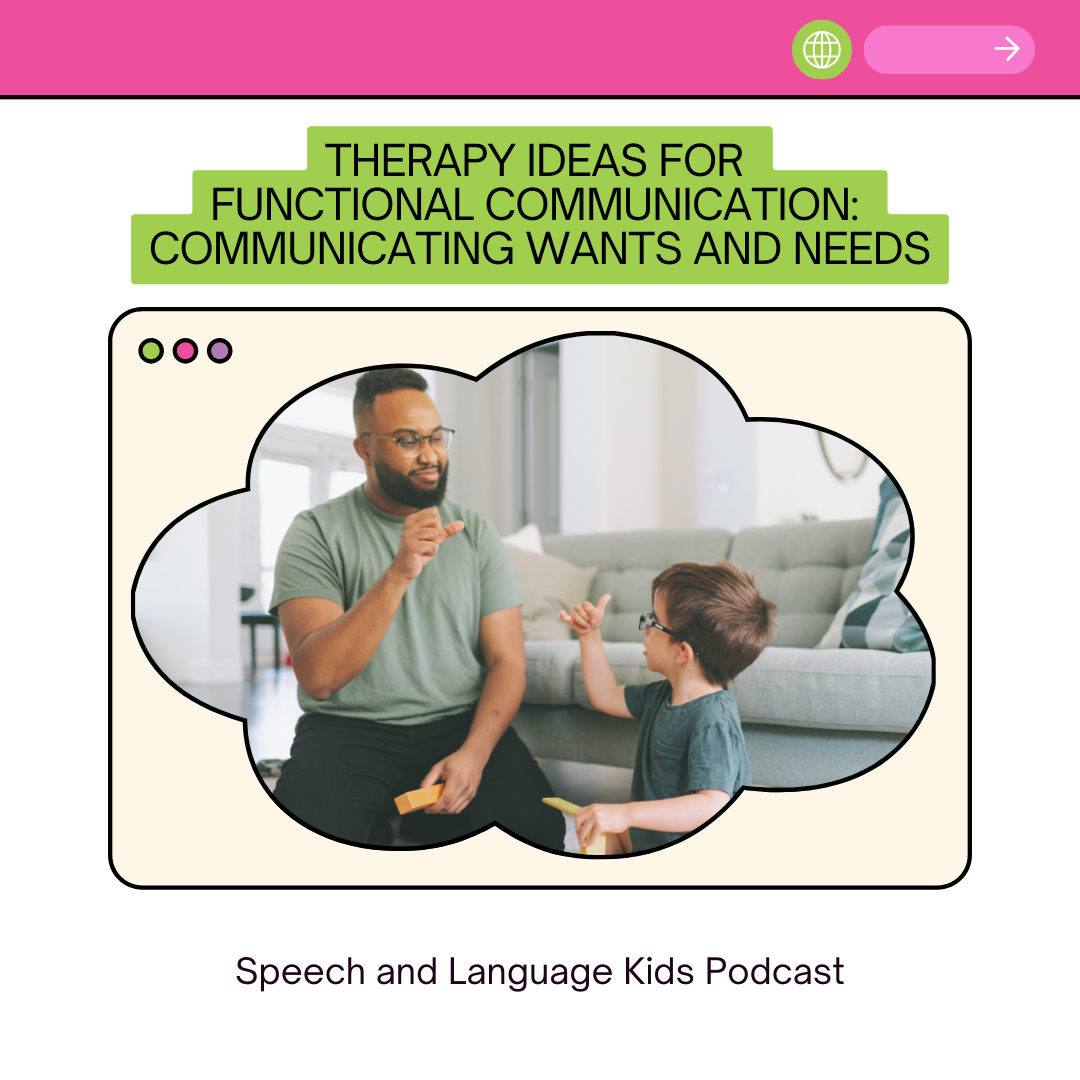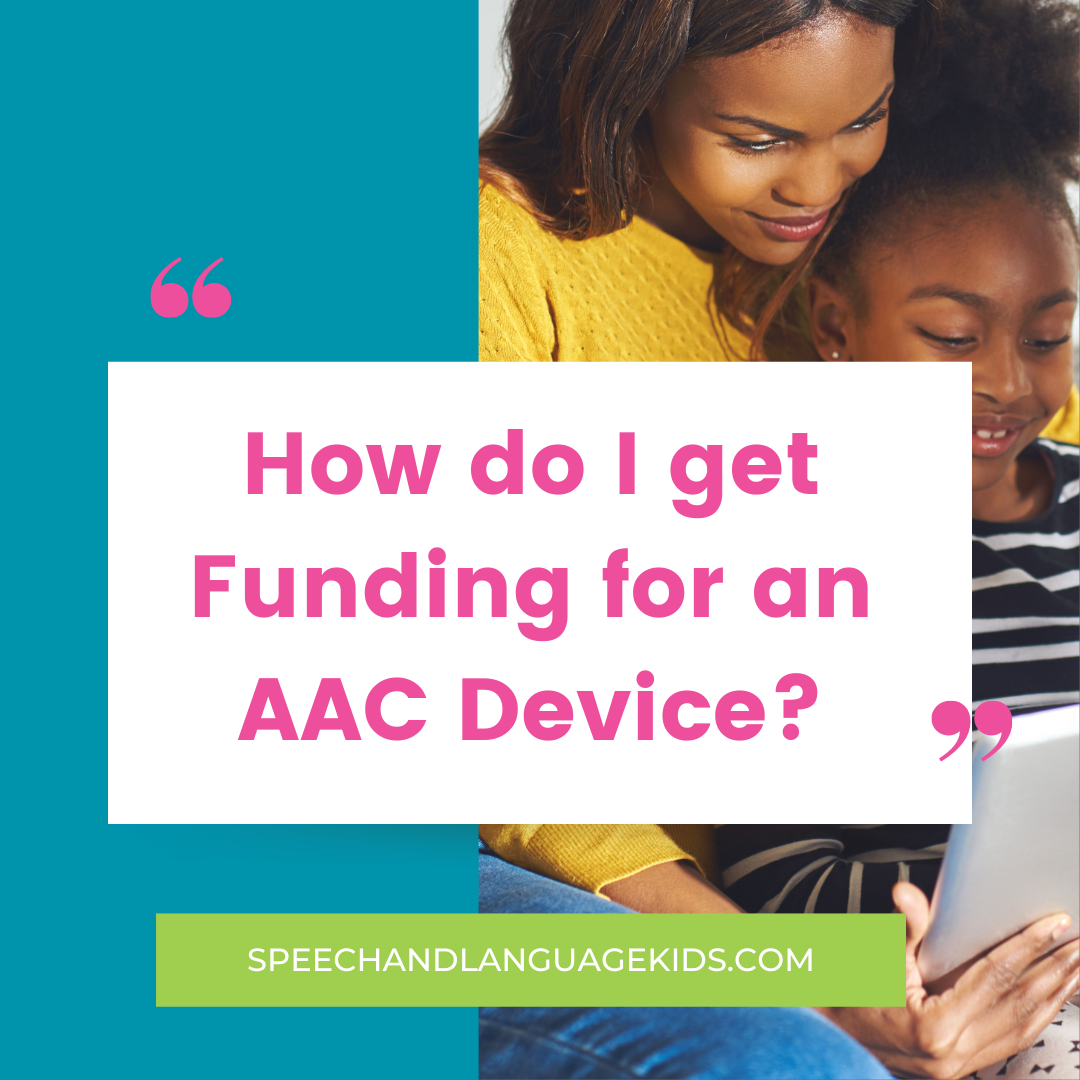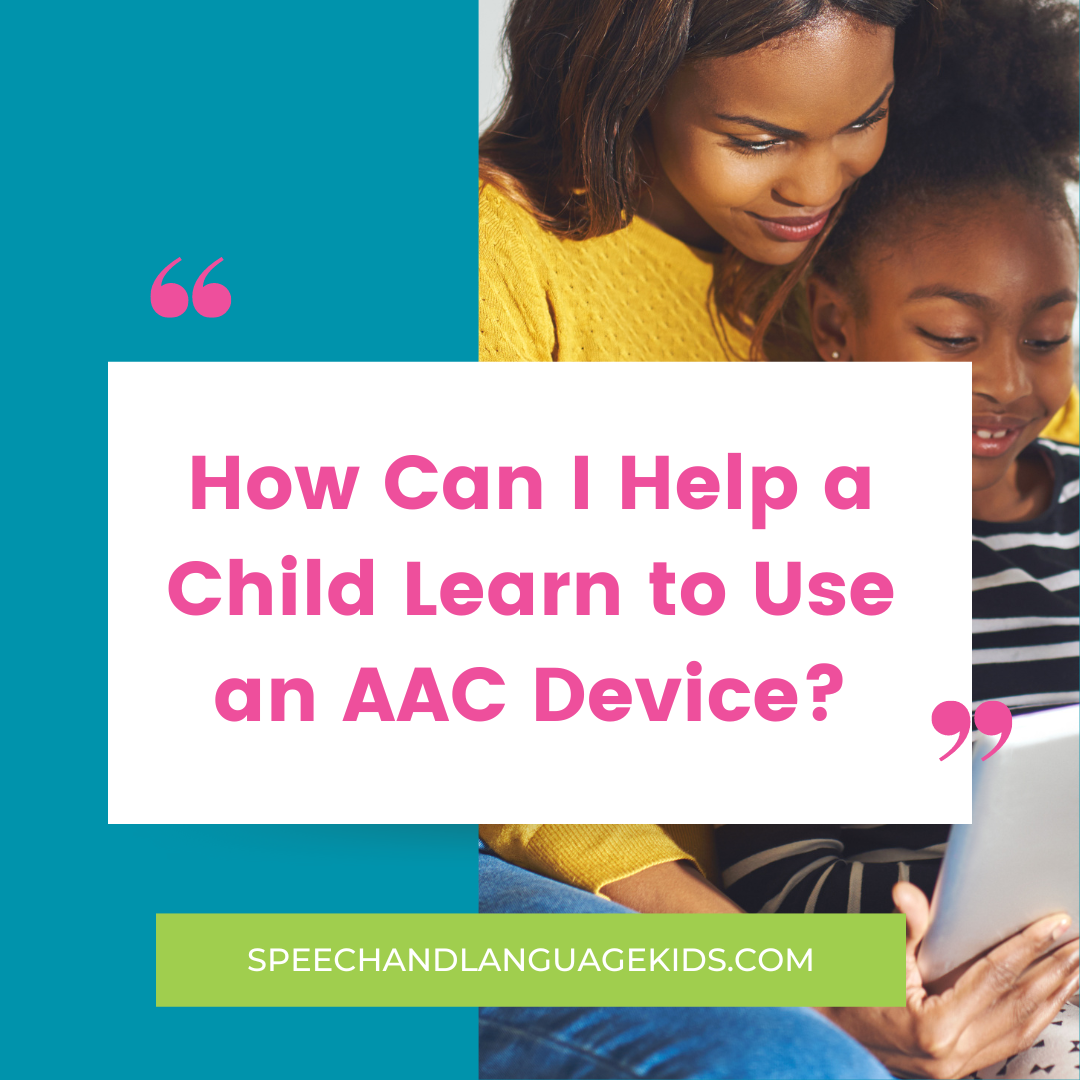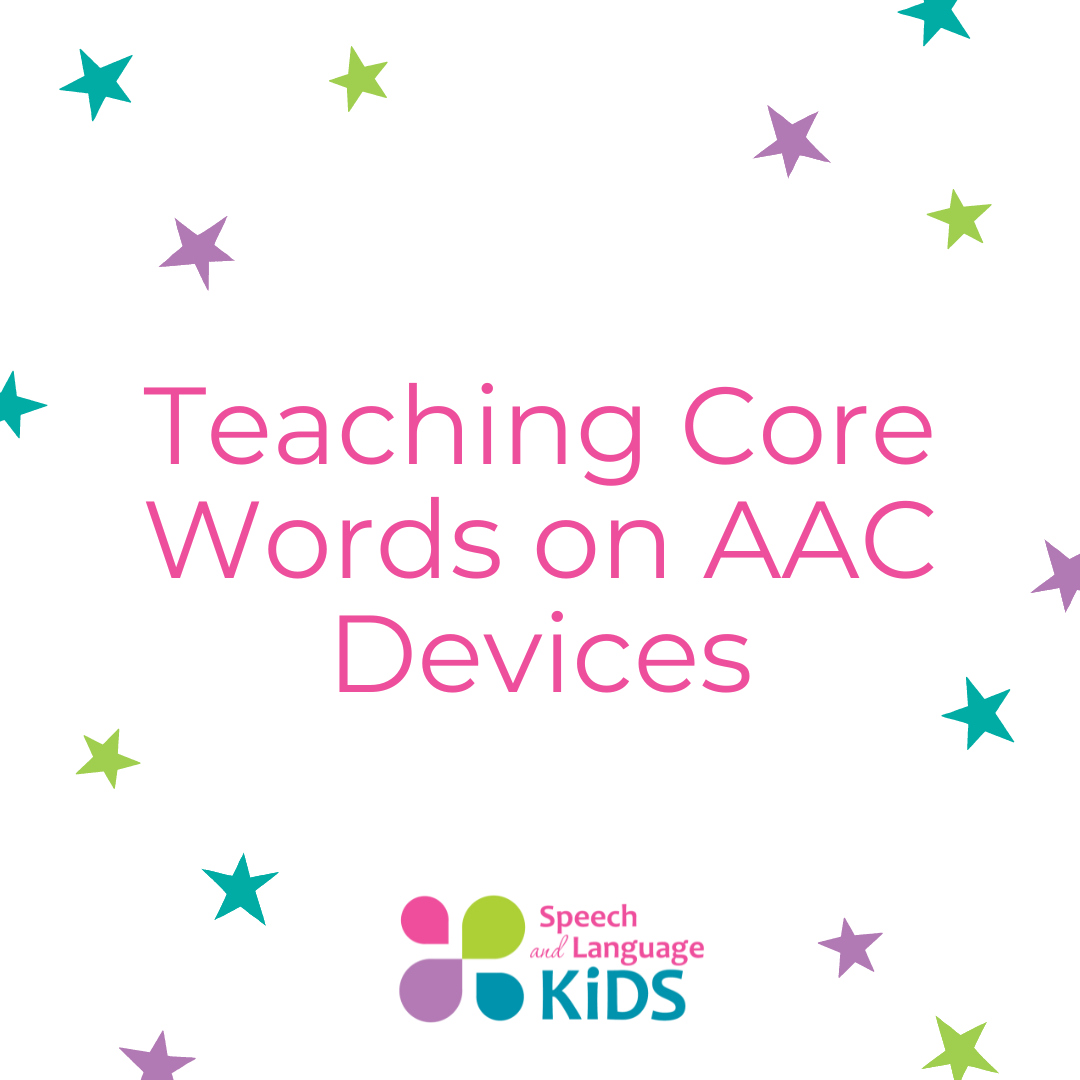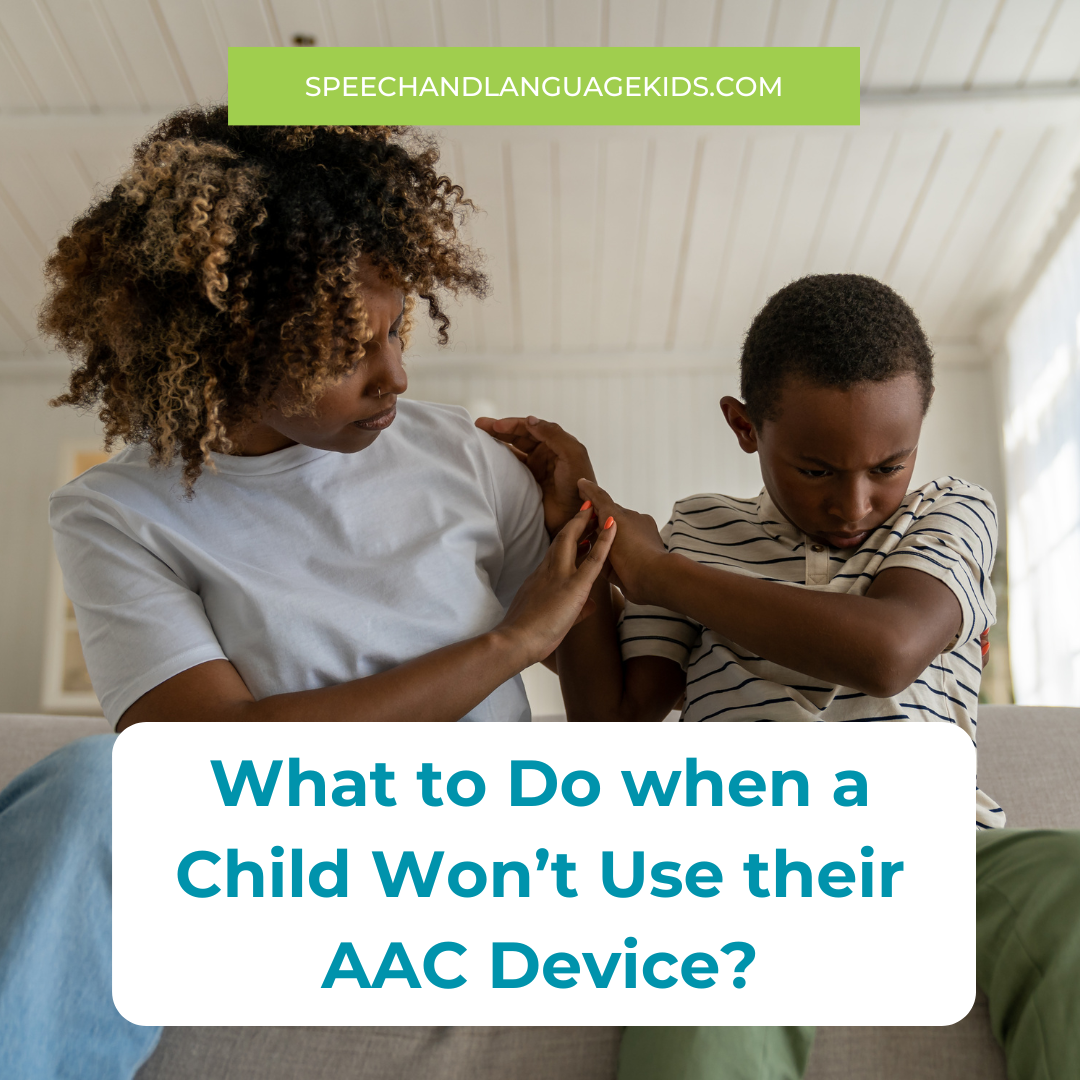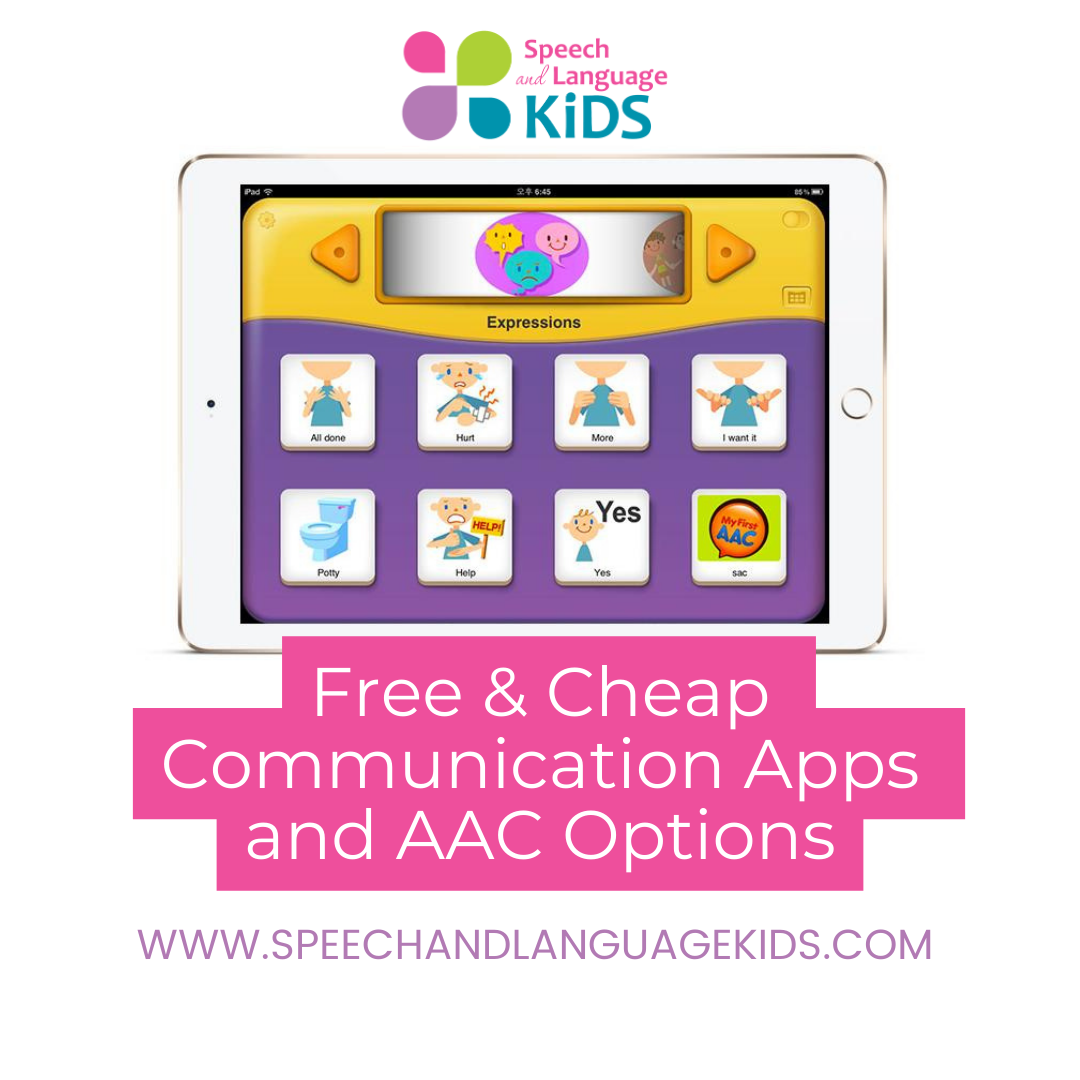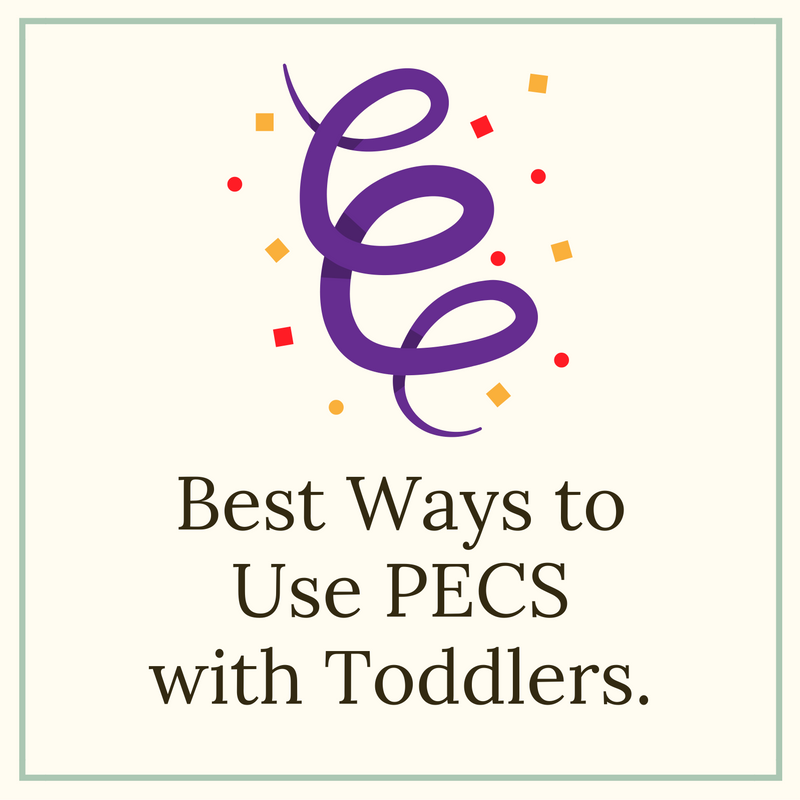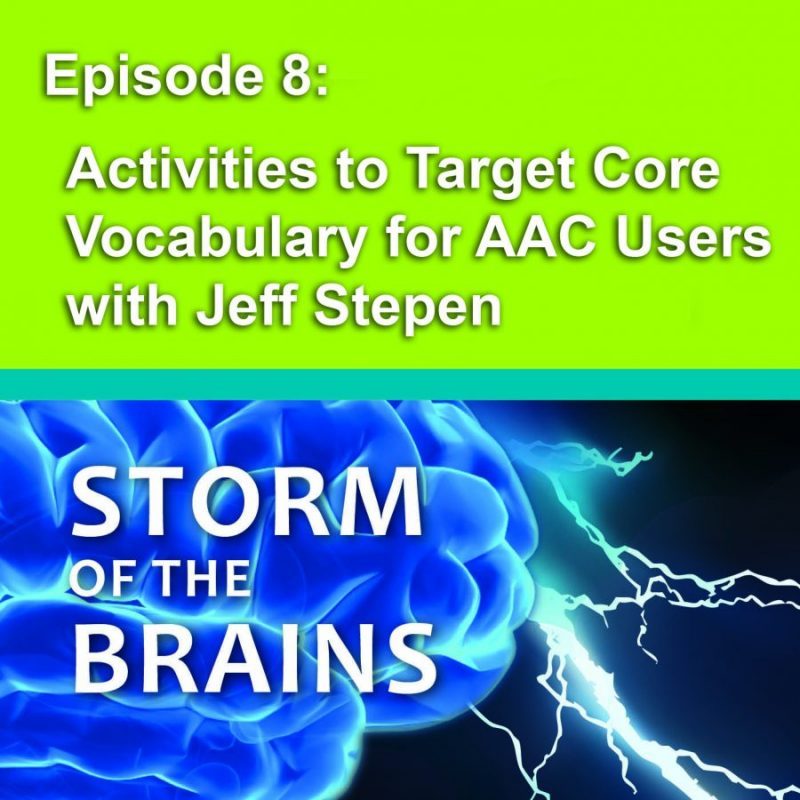AAC Resources for Parents and SLPs
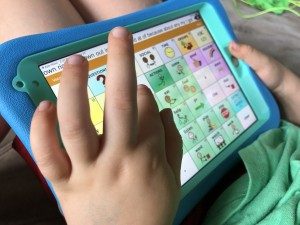
When a child or teen is struggling to speak, we can use augmentative/alternative communication (AAC) to help them communicate with others.
AAC can incorporate sign language, electronic communication devices, picture boards, and more!
This page contains AAC resources for parents and speech-language pathologists alike. We’ll show you what AAC is, when to use it, and how to teach it. Plus, we’ll show you where you can find our structured program for teaching children/teens to use AAC in their everyday interactions.
What is Augmentative/Alternative Communication (AAC)?
AAC stands for augmentative/alternative communication and describes any mode of communication that is not speaking with your mouth. This may involve pointing to or exchanging pictures, using sign language, using an AAC device that will speak a message when the user pushes a button, or many other forms of communication.
Who Would Benefit from Using AAC?
Augmentative and alternative communication is helpful for anyone who has thoughts to communicate but is unable to speak them using his/her own voice. This includes individuals with diagnoses such as late talker, autism, childhood apraxia of speech, down syndrome, muscle disorders, or any other diagnosis that can cause a child to be unable to speak his thoughts. AAC isn’t right for every child with these diagnoses but it is definitely something worth trying. Every child has the right to be given a voice.
Does Using AAC Prevent a Child from Speaking?
After reviewing all of the current research on augmentative and alternative communication in 2006, Millar, D. C., Light, J. C., et al. made the following statement about using AAC:
“The present research review provides important preliminary evidence that augmentative and alternative communication interventions do not inhibit speech production; instead, AAC may also support speech production”
How Can We Teach a Child/Teen to Use AAC to Communicate with Others?
When teaching someone to use an AAC device or system, we begin with functional communication. This means we’re helping that individual learn to use the AAC to communicate their basic wants and needs. Once those needs are met, then we can begin to use the AAC for more elaborate or advanced communication.
Here are a list of the phases we start with when teaching a child/teen to use AAC to communicate their basic wants and needs:
Beginner Level:
Using AAC for Basic Communication
(Ages 2-4 yrs and beyond)
- Modeling Core Vocabulary Words on an AAC Device/System
- Using Core Words on an AAC Device/System to Communicate Basic Wants and Needs
Intermediate Level:
Expanding AAC Use to Different Communicative Functions
(Ages 3-5 yrs and beyond)
- Using AAC to communicate: rejection, recurrence, actions, descriptors, possession, locatives, self-advocacy
Advanced Level:
Using AAC for Independent Functional Communication
(Ages 4-6 yrs and beyond)
- Using AAC Throughout the Day and Expanding Language Skills with the AAC Device/System
How to Get Started Teaching AAC to a Child
Choose one of the options below for a “getting started” guide:
Parents’ and Teachers’ Guide to Getting Started with AAC
Includes information about encouraging the child to use the device
Speech-Language Pathologists’ Guide to Teaching a New AAC Device:
Includes information about selecting devices, writing goals, and taking data to determine if the device is a good fit
What if He Won’t Use It?
Some children seem less than enthusiastic about using their AAC devices. Check out this video I created in answer to a question from a member who was working with a child who wasn’t motivated to use his AAC device:
What to Do When a Child Won’t Use his AAC Device
What Are the Different Types of AAC?
- Picture Communication Exchange System (PECS): Click Here to Learn About how PECS can Help Nonverbal Children
- Pictures or Simple Communication Boards: Click Here to Learn How to Make a Cheap Communication Board
- High and Low Tech AAC Systems: Low tech AAC systems can include things like picture boards or simple electronic devices that help a child talk. High tech augmentative and alternative communication includes the more sophisticated devices that make heavy use of technology. These are often computer or tablet-like devices where you push a button on a screen and it will either speak a message or open up more choices (like opening a file with many foods when you push “eat”). These devices can cost thousands of dollars but often insurance will cover part of the cost. Click Here to See Options for Inexpensive AAC Devices and Apps
- AAC Apps: If you have a tablet device or smart phone like an iPad or iPhone, you can download AAC apps that will turn your phone or tablet into a high tech AAC device. Although these apps can cost hundreds of dollars, they are much more reasonably-priced than their dedicated-device counterparts. Click Here for a Review of my Favorite Communication/AAC Apps
Can AAC Help a Child with Autism?
Many children with autism have been helped by using augmentative and alternative communication, especially young children who are non-verbal. Here are some ideas of how you can use AAC with a non-verbal autistic child:
Giving a Voice to Non-Verbal Children with Autism
Using the Picture Exchange Communication System for Children with Autism
How Can AAC Help With Behavior Problems?
If your child is demonstrating inappropriate behaviors due to frustration from lack of communication, AAC can be a wonderful option. This podcast will talk about different options to alleviate behavior problems with communication-delayed children.
A Structured Program for Teaching AAC:
Our AAC Curriculum includes everything you need to help a child or teen get started using AAC to communicate. We’ve taken all of the guess work out of it and included everything you need. Subscriptions start at just $50 per month and include all Curriculums and programs from the Speech and Language Kids.
Browse All AAC Articles:

About the Author: Carrie Clark, MA CCC-SLP
Hi, I’m Carrie! I’m a speech-language pathologist from Columbia, Missouri, USA. I’ve worked with children and teenagers of all ages in schools, preschools, and even my own private practice. I love digging through the research on speech and language topics and breaking it down into step-by-step plans for my followers.
Fun Fact: I was once called in by my supervisor on a Friday afternoon. She said the budget had to be turned in by 3:00 PM and they had an unexpected $4,000 left to spend. She told me if I could make my order by 3:00 PM I could buy as many AAC devices and systems as would fit into that budget. I cancelled my clients for the rest of the day and ended up with the most beautiful AAC library imaginable for my school!
Connect with Me:

